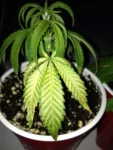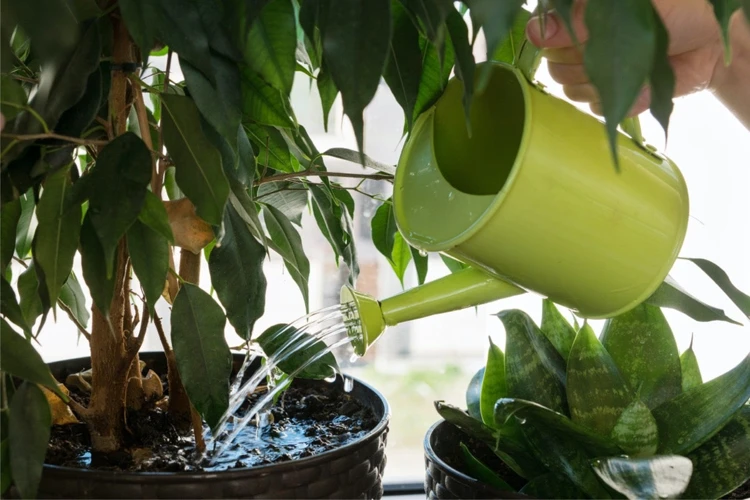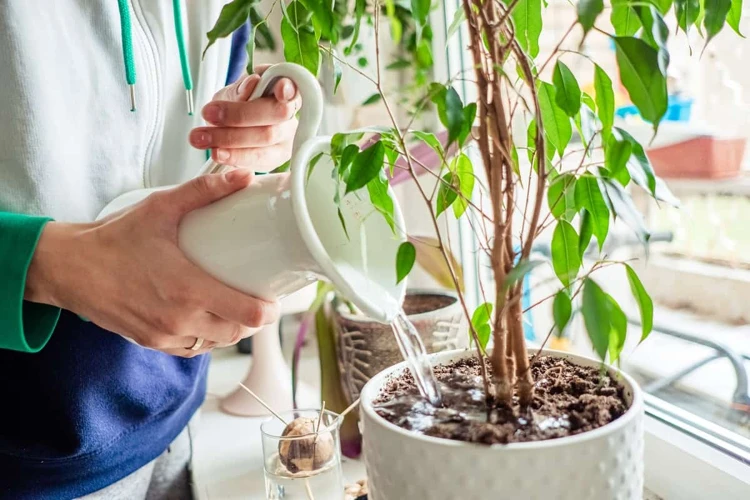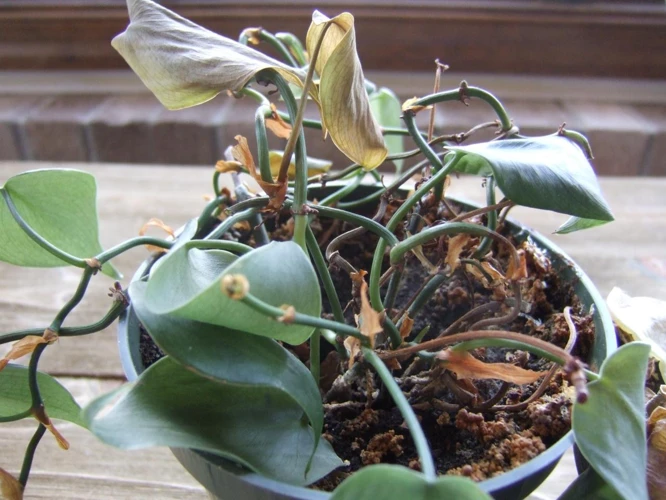
Identifying and Fixing Overwatered Cannabis Plants
Have you ever nurtured a cannabis plant with love and care, only to find it struggling to survive? It can be quite perplexing to see your precious plant wilting and yellowing, despite your attempts to keep it healthy. Overwatering is one of the most common mistakes made by cannabis growers, leading to a host of problems that can seriously harm the plant. If you’re noticing signs of distress such as drooping leaves, mold, or stagnant growth, it’s time to take a closer look at the impact of overwatering on your cannabis plants. This comprehensive guide will outline the signs of overwatering, its effects and causes, and most importantly, provide you with step-by-step instructions on how to fix it to bring your plant back to good health.
What is Overwatering?
Contents
Have you ever noticed your cannabis plant leaves turning yellow, wilting, or experiencing stunted growth? You might be confused about why it’s happening even though you’ve been consistently watering it. However, overwatering can be just as detrimental as underwatering. Overwatering is the act of giving your plant more water than it needs, causing the roots to become waterlogged and unable to receive oxygen properly. This leads to a range of issues that can negatively impact the health and growth of your cannabis plants. In the next section, we’ll discuss the signs of overwatering that you need to look out for.
Signs of Overwatering
Overwatering is one of the most common mistakes made by new and experienced cannabis growers alike. The following table outlines some of the signs to look for if you suspect your plant is being overwatered:
| Signs of Overwatering | Description |
|---|---|
| Wilting | Ironically enough, overwatering can cause cannabis plants to wilt. This occurs because the excess water in the soil deprives the roots of oxygen, making it difficult for them to take up the nutrients they need to remain upright and healthy. |
| Yellowing leaves | Another sign of overwatering is yellowing leaves. This occurs because the roots are unable to take up adequate nutrients and are essentially drowning in the waterlogged soil. Nutrient deficiencies can cause leaves to turn yellow and ultimately die off. |
| Root rot | Overwatering can also lead to root rot. When the soil is saturated with water, it creates a perfect environment for harmful bacteria and fungus to grow. These microorganisms feast on the roots of the plant, causing them to decay and ultimately die. |
| Mold and mildew | Excess moisture in the soil can also lead to the growth of mold and mildew. These fungal diseases can affect the leaves and stems of the plant, hindering its growth and ultimately killing it. |
| Slow growth | Cannabis plants that are overwatered may also exhibit slow growth. This is because their root systems are weak and struggling to take up the necessary nutrients. As a result, plants may take longer to develop and be more vulnerable to pests and disease. |
It is important to note that these symptoms can also be indicative of other issues, and a thorough diagnosis is necessary to determine the root cause of the problem. However, if you suspect your cannabis plant is being overwatered, these signs can help confirm your suspicions.
Effects of Overwatering on Cannabis Plants
Overwatering cannabis plants can have severe consequences. The table below lists some of the most common effects of overwatering on cannabis plants:
| Effect | Description |
|---|---|
| Root rot | When roots are consistently sitting in water, it can cause them to rot. This can lead to stunted plant growth, yellowing leaves, and weak stems. |
| Nutrient deficiencies | Overwatering can cause essential nutrients to be leached away from the soil, leaving plants deficient in key nutrients like nitrogen, phosphorus, and potassium. This can cause leaves to become discolored or even fall off. |
| Reduced oxygen uptake | Waterlogged soil can reduce the amount of oxygen that a plant’s roots are able to absorb. This can lead to suffocation of the roots, which can cause the plant to wilt, stunted growth or death of the plant. |
| Mold and mildew | Overwatering can create a damp environment that’s perfect for mold and mildew to thrive. This can cause plant leaves to become discolored, and it’s a major factor in the development of bud rot. |
| Pest infestations | Overwatered plants are at a greater risk of pests like fungus gnats, which feed on the organic matter found in damp soil. |
It is crucial to monitor the plants and take action if signs of overwatering are observed. This is to prevent the aforementioned effects and allow the plants to grow and thrive.
Why Overwatering Happens
Determining why overwatering occurs can be a perplexing task for cannabis growers. Despite their best intentions, plants can fall victim to the effects of too much water. Understanding the causes of overwatering is crucial to preventing this issue from occurring in the first place, but there are many factors at play that can contribute to its onset. By exploring some of the common sources of overwatering, cultivators can gain insights that will allow them to safeguard their plants against this common issue.
Common Causes of Overwatering
Overwatering is a common mistake that many cannabis growers make. Here are some of the most common causes of overwatering that you should be aware of:
| Cause | Description |
|---|---|
| Watering too frequently | One of the most common causes of overwatering is watering too frequently. It’s important to remember that cannabis plants don’t need to be watered every day, especially if you’re growing in soil. Watering too frequently can lead to waterlogged roots and other problems. |
| Using pots with poor drainage | If your pots don’t have adequate drainage, water can accumulate at the bottom of the pot and cause root rot. Make sure that your pots have drain holes at the bottom and that excess water can drain away easily. |
| Overcompensating for underwatering | If you’ve underwatered your plants in the past, you may be tempted to overcompensate by watering them more frequently than necessary. However, this can lead to overwatering and other problems. It’s important to find the right balance and water your plants only when they need it. |
| Watering too much at once | If you water your plants too much at once, the excess water may not be absorbed by the soil and can run off or accumulate at the bottom of the pot. This can lead to waterlogged roots and other issues. |
| Using the wrong kind of soil | If the soil you’re using doesn’t drain well or retains too much moisture, it can lead to overwatering and other problems. Make sure to use a well-draining soil mix that’s appropriate for cannabis plants. |
By understanding the common causes of overwatering, you can take steps to avoid them and ensure that your cannabis plants thrive.
How to Fix Overwatering
Fixing overwatering in cannabis plants can be a daunting task for any grower, especially for beginners. It’s important to take corrective measures as soon as possible to prevent irreversible damage to your plants. The process may seem overwhelming, but with the right techniques and tools, you can restore your plants to their optimal health. In this section, we’ll guide you through a step-by-step process to fix overwatering in your cannabis plants, ensuring a successful and bountiful yield. So, let’s dive into the details!
Step-by-Step Guide to Fix Overwatering
When your cannabis plants are overwatered, it is crucial to fix the problem as soon as possible to avoid more damage. Here is a step-by-step guide to help you fix overwatering:
Step 1: Stop Watering Immediately
The first and critical step in fixing overwatering is to stop watering your cannabis plants, as root rot can be caused by leaving your plants in wet soil for an extended period of time.
Step 2: Assess the Damage
You must assess the extent of your plant’s damage after stopping watering. Check the plant’s leaves and stems thoroughly for signs of damage or root rot. If you see any signs of root rot, such as moldy, soggy roots or a foul smell, you’ll need to take action to save your plant.
Step 3: Remove Waterlogged Soil
Waterlogged soil is one of the significant causes of overwatering, so you need to remove this soil from the plant’s surface. Use a garden trowel to scrape away the damp soil gently. If your plants are in pots, transfer them to a dry pot with fresh soil.
Step 4: Improve Drainage
Good drainage is essential for cannabis plants to avoid overwatering. If you have planted your cannabis plants in the ground, ensure the soil is well-draining. If you grow cannabis plants in containers, add some perlite or vermiculite to improve drainage.
Step 5: Increase Air Circulation
Good air circulation can help dry out the soil faster and prevent further waterlogging. Consider moving your plants to a well-ventilated area or use a small fan to improve air circulation around the plant.
Step 6: Wait and Observe
After taking these steps, give your plants time to recover. Continue to observe your plants for signs of overwatering or other symptoms, and only water them when the top layer of soil feels dry to the touch.
By following these steps, you can help your cannabis plants recover from overwatering and go back to healthy growth.
Preventing Overwatering
Preventing overwatering is crucial for healthy plant growth and avoiding the negative effects of too much moisture. By understanding the best practices for watering cannabis plants, you can ensure that your plants receive the correct amount of water they need to thrive. In this section, we’ll explore various tips and techniques for preventing overwatering and maintaining optimal moisture levels for your cannabis plants. So, let’s dive into some effective ways you can avoid overwatering and keep your plants healthy and happy.
Best Practices for Watering Cannabis Plants
When it comes to watering cannabis plants, there are a few best practices that can help you prevent overwatering and keep your plants healthy. Here are some tips:
- Check the soil moisture level: Before watering, check the soil moisture level by sticking your finger about an inch into the soil. If it feels dry, it’s time to water. If it still feels moist, wait another day or two.
- Water deeply: When you do water, make sure to give your plants a deep, thorough watering rather than just a light sprinkle. This will help the roots grow deeper and make your plants more drought-resistant.
- Water slowly: Don’t rush through watering your plants. Water slowly to allow the soil to absorb the water without washing it away or leaving dry spots.
- Use the right amount of water: Avoid overwatering or underwatering your plants by using the right amount of water. As a general rule of thumb, water plants until you see water coming out of the drainage holes at the bottom of the container.
- Water at the right time: Water your plants in the morning or early afternoon when the temperatures are cooler. This will prevent the water from evaporating too quickly and also give your plants time to dry out before the cooler temperatures of the evening.
- Use good drainage: Make sure your plants are in pots or containers with good drainage holes. This will help prevent water from pooling at the bottom of the pot and drowning the roots.
- Reduce watering during the flowering stage: During the flowering stage, your plants may need less water. Reduce watering frequency and only water when the soil is dry to the touch.
- Avoid watering the leaves: Water the soil, not the leaves. Wet leaves can lead to mold and fungal growth on your plants.
By following these best practices, you can keep your cannabis plants healthy and prevent overwatering. Remember to always check the soil moisture level before watering and to give your plants a deep, thorough watering when they need it.
Conclusion
In conclusion, overwatering is a common mistake that many cannabis growers make, and it can have a significant impact on the health and vitality of your plants. However, by learning to recognize the signs of overwatering and taking steps to fix and prevent it, you can ensure that your plants stay healthy and strong.
It is important to remember that overwatering can manifest in different ways, depending on the specific strain and growing conditions. Therefore, it is crucial to closely monitor your plants and respond to any signs of overwatering as soon as possible.
By understanding the causes of overwatering and adopting best practices for watering your cannabis plants, you can avoid this problem altogether. This includes using well-draining soil, allowing the soil to dry out between waterings, and adjusting your watering schedule to account for humidity and temperature changes.
If you do notice signs of overwatering, it is essential to take action quickly. This may involve adjusting your watering schedule to allow the soil to dry out, removing any standing water, and adjusting temperature and humidity levels to promote faster drying.
By following the step-by-step guide to fixing overwatering, you can help your plants recover and regain their health and vitality. This includes removing any damaged leaves, adjusting your watering schedule, and promoting healthy root growth through the use of beneficial microbes and nutrients.
Ultimately, the key to successful cannabis cultivation is maintaining a healthy balance of nutrients, water, and light. By taking steps to prevent and fix overwatering, you can help ensure that your plants thrive and produce high-quality buds that are free of disease and other problems. So, always be vigilant and attentive to the needs of your plants, and you’ll be rewarded with a bountiful harvest of healthy, happy cannabis plants.
Frequently Asked Questions
Can overwatering kill a cannabis plant?
Yes, overwatering can lead to root rot, nutrient deficiencies, and other issues that can ultimately kill a cannabis plant.
What are some common signs of overwatering?
Yellowing leaves, wilting, mold or mildew growth, slow growth, and a sour smell in the soil are common signs of overwatering in cannabis plants.
How often should I water my cannabis plants?
The frequency of watering will depend on a variety of factors like the size of the plant, the pot size, and the climate. It’s important to allow the top inch of soil to dry out before watering again.
Is it better to underwater or overwater cannabis plants?
It is better to underwater than overwater cannabis plants. It is easier to fix underwatering issues, but overwatered plants can suffer from root rot and other serious problems.
What should I do if I suspect my cannabis plant is overwatered?
It’s important to stop watering the plant immediately and allow the soil to dry out before watering again. You can also aerate the soil or transplant to a pot with better drainage to help fix overwatering issues.
Can using a moisture meter help prevent overwatering?
Yes, using a moisture meter can help prevent overwatering by allowing you to accurately measure the moisture content in the soil.
How long does it take to fix overwatering in a cannabis plant?
The time it takes to fix overwatering issues will depend on the severity of the problem. It could take anywhere from a few days to a few weeks for the plant to recover fully.
What is the best time of day to water cannabis plants?
The best time of day to water cannabis plants is in the morning, as this allows the plant to dry out during the day and reduces the risk of mold or mildew growth.
What is the best type of soil for preventing overwatering?
A well-draining soil mix that contains perlite or vermiculite is best for preventing overwatering in cannabis plants.
Can humidity levels affect overwatering?
Yes, high humidity levels can exacerbate overwatering issues by increasing the risk of mold or mildew growth in the soil.





